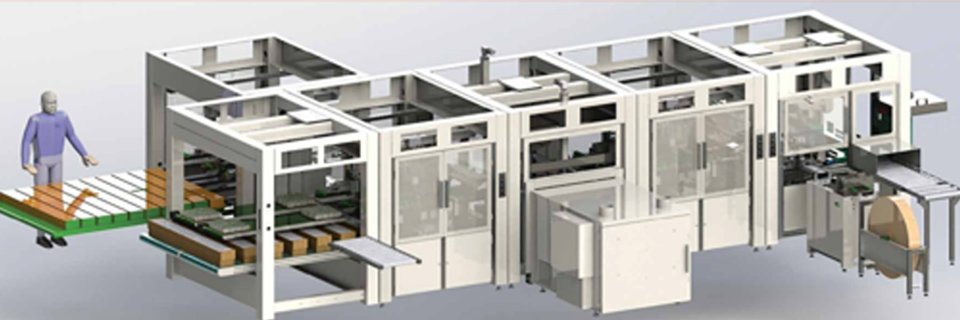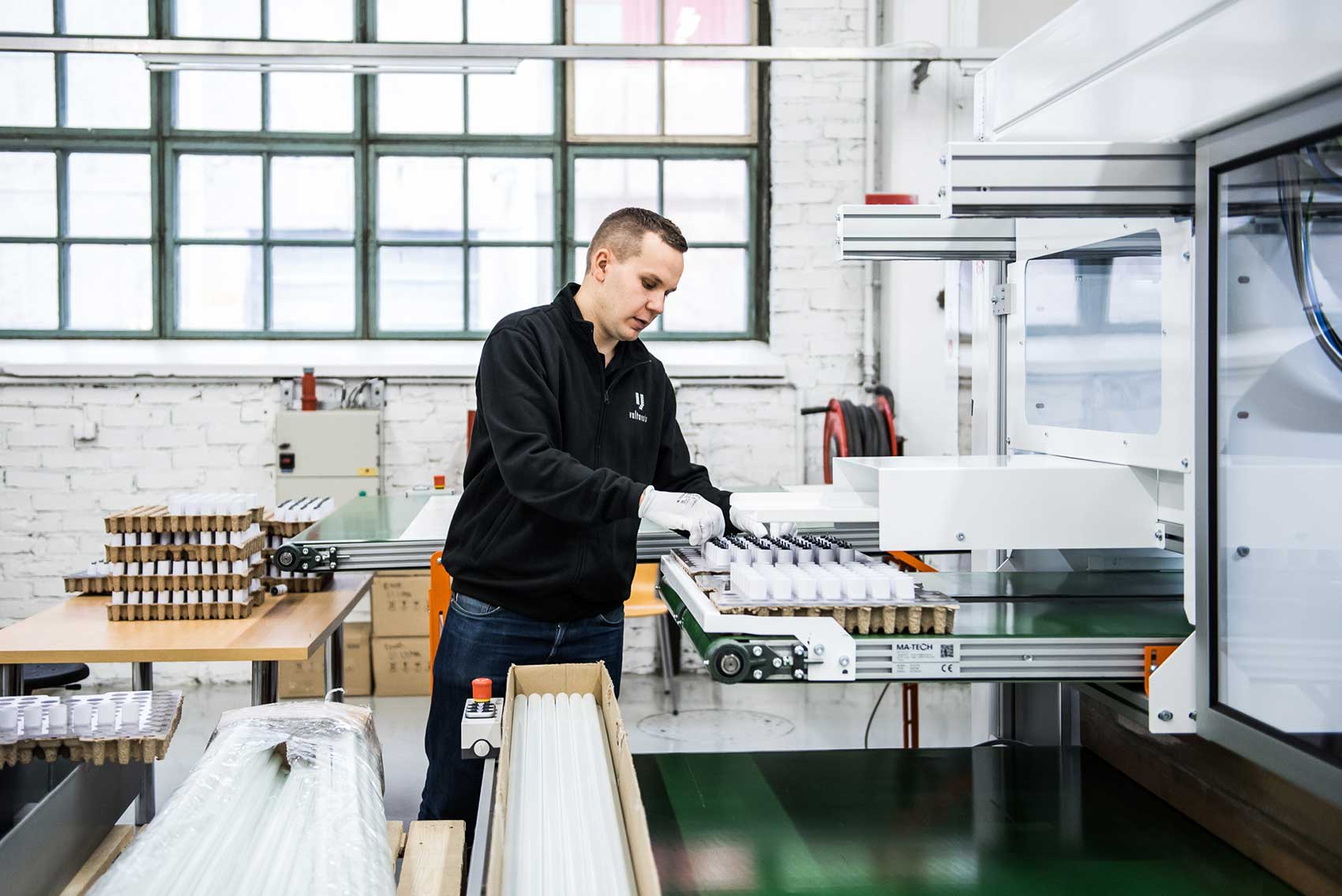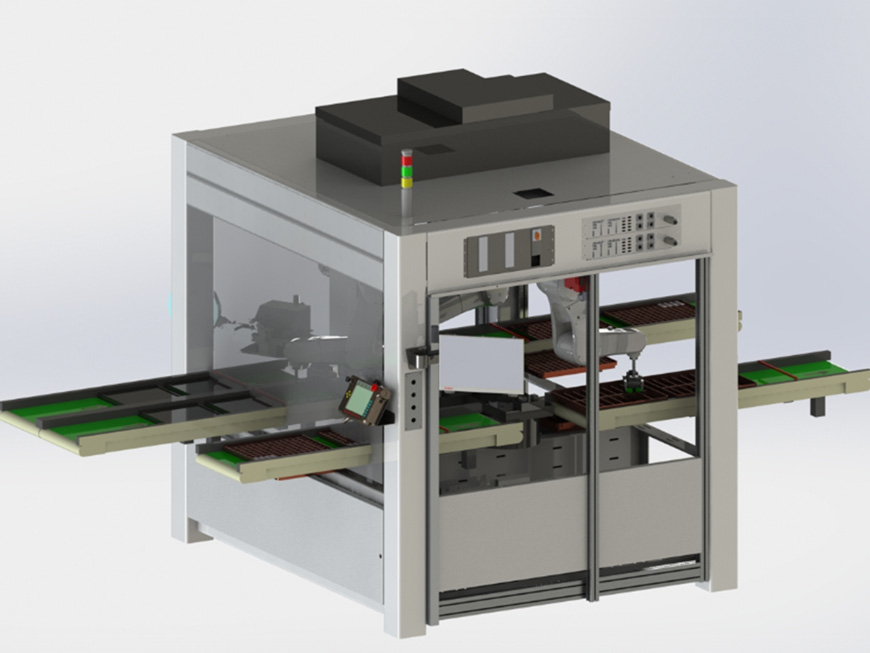When you build a new assembly line or scale-up existing capacity, low costs and fast ramp-up time are critical. However, more often than not, time and money are wasted for dimensioning the equipment to match your capacity needs and testing incompatible interfaces – lack of modularity slows down time-to-production and break-even.
With a fully-modular platform, you can customize the automated assembly line precisely according to your needs. A modular platform can be installed quickly, even in one day. And, when you need to scale capacity, add more modules!
This blog introduces a fully modular microfactory platform that enables you to build an automated assembly line fast and with a minimum initial investment!
Download Guide – How to build scalable production with a modular microfactory platform?
Full Modularity
Full modularity is achieved at two levels. The automated assembly line consists of one or more modules, which are combined through standardized interfaces. Each module hosts a production application. The applications are also modular and equipped with standard interfaces to enable smooth integration across the assembly line.
Modules
An automated assembly line is built up from standardized modules. Each module can have several functions, or applications, which are modularized as well. Thanks to the modular structure and standardized interfaces, you can combine and integrate the modules to create a fully-automized line customized for your needs. Modularity allows you to build an assembly line quickly, add more capacity when needed, and re-configure the line flexibly. EID Robotics provides compact, fully standardized modules with a minimum floor space requirement.
Applications
Each module can be equipped with various production applications, such as robotic arms, machine vision devices, laser marking equipment, manipulators, sticker feeders, heat staking, hot bar soldering, ultrasonic welding, screwing, dispensing of glues and similar masses, flexible feeders, conveyors, and conveyor tracking appliances. More applications are developed continuously to fulfill your needs.
Benefits of a Fully Modular Assembly Line
Why is modularity critical in today’s manufacturing? Because of competition! You need to ramp up production fast to speed up time-to-market and minimize investment to improve break-even and ROI. Modularity brings you all that.
A fully modular assembly line is easier to design, and standardized interfaces reduce compatibility issues and accelerate the deployment process.
Modularity enables scalability. You can minimize the initial investment with a small assembly line. When the demand grows, add more modules to increase capacity.
Throughout the entire life-cycle, modularity enables you to flexibly adapt to production changes, run higher product-mix, and scale capacity. With full automation and robots, you can lower operational costs while increasing quality and yield radically. Automation requires less space and operational staff, which reduces the lifetime costs dramatically.
Examples of Modular Automated Assembly Lines
EID Robotics has delivered several fully modular automated assembly and production lines based on the ANT Plant microfactory solution. Here are two examples.
Automated Sensor Production – One Module
Senseair is a leading global provider of highly-advanced sensing technology. Senseair implemented a fully-automated, modular microfactory platform for producing new types of NDIR sensors. Just one module was needed to run the assembly process, quality verification, and packing. Only one operator per shift is needed to ensure that production runs smoothly while minimizing operational costs. Eventually, the microfactory increased product quality and opened new customer segments for Senseair!
Automated LED Assembly – 6 Modules

A Finnish manufacturer of high-quality LED lighting solutions, Valtavalo built a modular automated production line based on EID Robotics’ microfactory platform. Its industry-scale production needed only six modules occupying just 60 m2 of floor space. The modules included loading, assembly, aging, testing, laser marking, and packaging.
Conclusions
Full modularity radically accelerates deployment and reduces initial investment for automated assembly and production lines. Modularity increases flexibility and allows you to change and scale production quickly. However, getting it right the first time requires a field-proven process, cutting-edge technology, and in-depth experience – Contact EID Robotics to find all that under one roof!
Download Guide – How to build scalable production with a modular microfactory platform?



